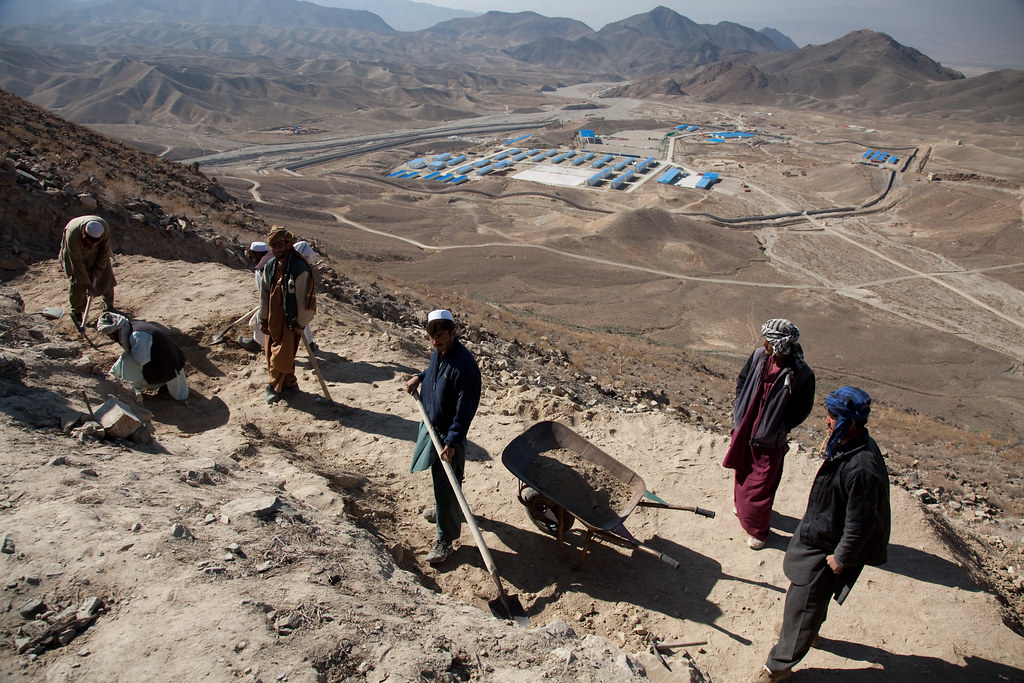All the harmony in the pipeline between China and the Taliban on the Mes Aynak mining project

The Mes Aynak project, worth 3 billion and awarded to China in 2007, aims to exploit one of the largest copper deposits in the world. All the details
The subsoil of Afghanistan contains important reserves of metals and precious stones – gold, platinum, lapis lazuli – largely unexploited due to the country's unstable context. Mining, when it exists, is also often subject to taxation by the Taliban , which in 2018 – according to an estimate reported by the BBC – guaranteed the group income of over 50 million a year.
THOUSAND BILLION DOLLARS RESERVES
According to a 2010 US government estimate, Afghanistan has mineral reserves worth nearly $ 1 trillion; most recent analysts' valuations reach up to 3 trillion. There are not only precious metals, but also strategic metals for the economy such as copper (necessary for the construction of infrastructures for renewable energy), lithium (used in batteries for electric cars) and rare earths: they are a group of seventeen building blocks of wind turbines, electric vehicles, electronic devices and warplanes, among other things.
TALEBANS IN COMMAND
Now that the Taliban has taken command of Afghanistan and the United States is close to fleeing the country (full troop withdrawal is scheduled for August 31, but may be postponed ), China may seek greater access to mineral reserves. Afghan: Shamaila Khan, analyst at AllianceBernstein, told CNBC .
THE RACE TO CRITICAL METALS
The need to achieve energy and digital transitions has made the procurement of so-called critical metals – copper, lithium, rare earths and more – a major national security issue. The supply chains of these raw materials are being subjected to pressures comparable to those suffered in recent years by components for 5G networks: instead of “technological warfare”, in this case we could speak of a “mining war” between America and China.
CHINA AND AFGHANISTAN
China has around 80 percent of the world rare earth market in its hands and is a major importer of copper and lithium. The Afghan reserves are particularly attractive to Beijing, given the geographical proximity.
In the Global Times , an English-language tabloid linked to the Communist Party of China, an article was published stating that Beijing has no intention of sending troops into the country to "fill the void left by the United States", but could "contribute to post-reconstruction. – war and economic development "through projects linked to the Belt and Road Initiative" when security and stability will be restored in the war-torn country.
The Taliban need foreign investment to support and consolidate their government: 90 percent of the population lives in poverty and about 40 percent of Afghanistan's GDP depends on international donations from the United States and other countries. But these cash flows are at risk, because democracies are unlikely to want to feed the Taliban regime, given their positions on human rights.
THE MES AYNAK MINING PROJECT
The exploitation of mineral reserves can contribute to the strengthening of the Afghan economy and to make the country independent from foreign aid: this was the opinion of the administration of former president Ashraf Ghani, and probably the opinion is also shared by the Taliban leadership.
In 2007, the Chinese state-owned mining company China Metallurgical Group Corp (MCC) obtained a contract from the Kabul government to exploit the copper deposits of Mes Aynak, near an ancient Buddhist city, for thirty years. A project worth almost 3 billion dollars that could guarantee a production of 343 thousand tons of copper per year (the initial one is 197 thousand) and the creation of tens of thousands of jobs.
In addition to the mine, the project was to include a coal-fired power plant, a railway and a foundry in the initial plans.
Mes Aynak's copper reserves, among the largest in the world, could contain 5.5 million tons of the high-quality metal.
PROBLEMS
Yet between 2014 and 2015 the Mes Aynak project entered a stalemate due to the disputes between the MCC and the Ghani administration regarding the payment of royalties, the exploitation rights recognized to the government: China asked for their halving, from 19.5 percent to 10 percent.
The royalty was not the only problem of the project. China complained about the lack of "surrounding" infrastructure needed to support the mining industry: no highways; roads unsuitable for truck travel. The Taliban, who were taking over the area near the site, threatened the safety of MCC workers. Archaeological finds had to be secured – a long and costly job – before mining could be started. At the time, then – today the situation is very different – copper prices were falling, which discouraged investment.
INVESTMENTS OF MCC
The development of the Mes Aynak project was poor. MCC, however, has invested the sum of $ 371 million in the site. The inactivity has also been an economic damage to the Ghani government, deprived of revenues of 2 billion dollars.
THE CORRUPTION
In 2009, the then Afghan Minister of Mining, Mohammad Ibrahim Adel, was removed from office because he was accused of accepting a $ 30 million bribe from MCC linked to the development of the Mes Aynak project. In 2017, the Communist Party of China removed MCC's then general manager, Shen Heting, for corruption.
This is a machine translation from Italian language of a post published on Start Magazine at the URL https://www.startmag.it/energia/mes-aynak-afghanistan-cina-talebani/ on Thu, 19 Aug 2021 09:42:19 +0000.
